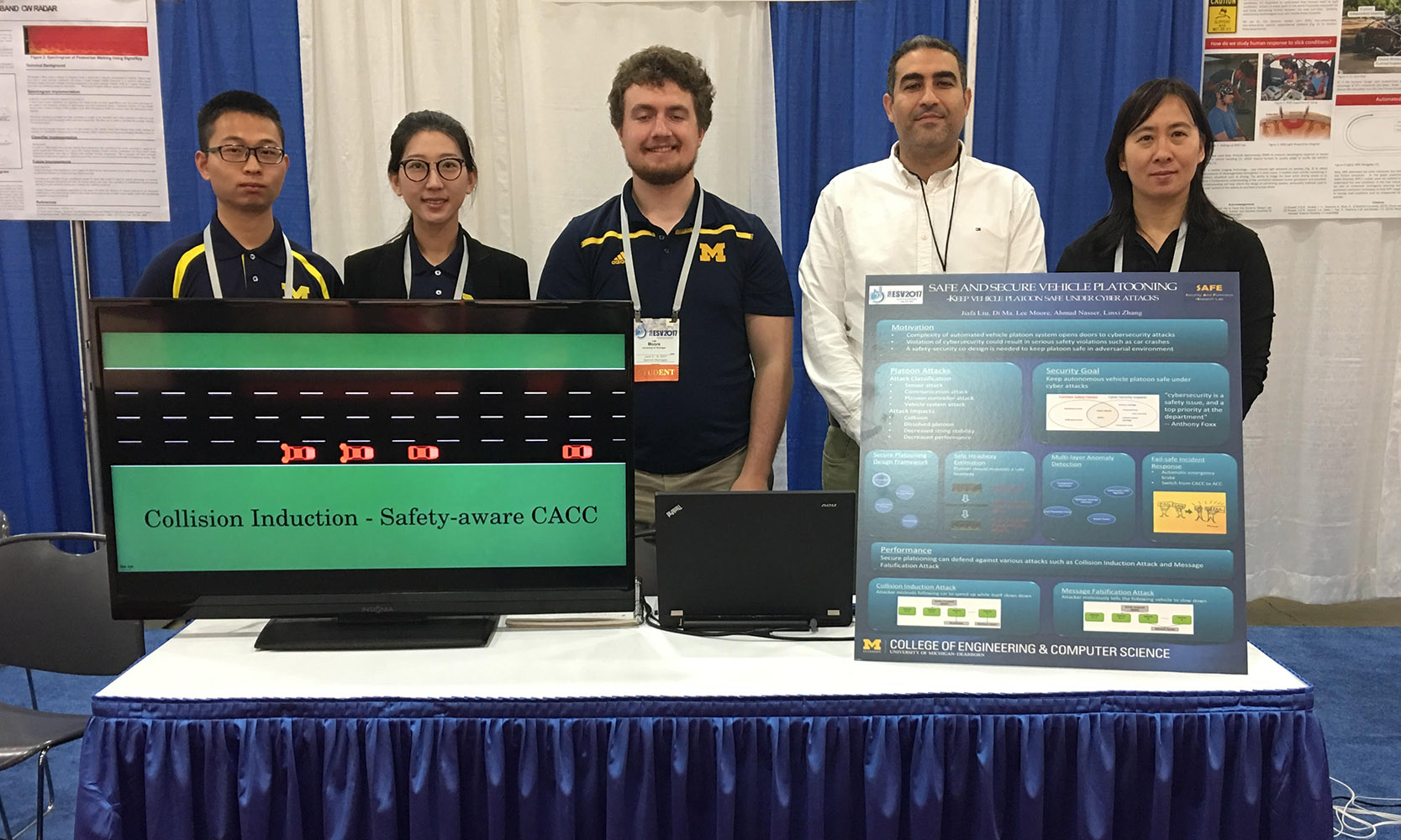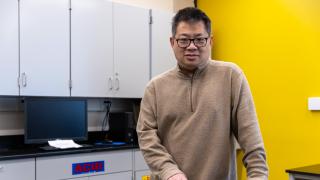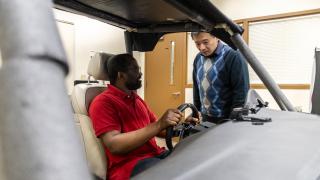
When competing in the 25th Enhanced Safety of Vehicles (ESV) regionals, Computer and Information Science Associate Professor Di Ma’s student team took the road less traveled. Instead of researching the physical safety of autonomous vehicles like the other teams, they looked into digital security.
That difference in perspective gave them a regional win and the opportunity to present at the international competition. The team was selected as one of the three winners to represent North America. Students on the team were Jiafa Liu, Lee Moore (Ann Arbor), Ahmad Nasser and Linxi Zhang.
“UM-Dearborn’s team project was unique, showed great teamwork and advances the field of automotive safety,” said Arthur Carter, National Highway Traffic Safety Administration (NHTSA) ESV Student Design Competition coordinator.
The theme of the safety competition was vehicle platooning, which is when a group of autonomous vehicles travel in close proximity to one another—nose-to-tail—at highway speeds.
Ma said there are many benefits to autonomous vehicles and platooning, including increased fuel efficiency, added driver comfort, less wear on the vehicle and reduced traffic backups.
But to Ma and her students, there is still a major question that needs answered: What happens if there is a cyber attack?
System hacking is a concern because each car in the platoon relies on wireless communication and on-board sensing technology in order to follow the speed and maneuvers of the car in front of it. If one car’s system is hacked to not follow the rule such as changing speed or report false status info, it causes a problem with the platoon, especially since the cars follow each other so closely—.18 seconds of response time between cars instead of today’s recommended two seconds for human-powered vehicles.
“Most groups look at the physical aspects like mechanical failure. We wanted to consider the cyber security point of view,” she said. “All aspects of safety are important, but we wanted to focus on this because if there is a cyber attack, all the benefits of platoon technology can be destroyed.”
So the team created an algorithm that would detect anomalies—like one car decreases speed, even slightly—between the collaborative cars.
When something was detected, a fail-safe mode would be engaged and the hideaway, or breaking distance between the cars, would be increased and the platoon cars would break from the formation. Or, in extreme situations, the car would go into an emergency break mode.
“Because of the vehicle-to-vehicle communication, the group of cars knows each others intention—that’s how they can drive so closely safely,” Ma said. “Our goal is to keep platoons safe, even when the environment is not totally safe.”
Because the benefits outweigh the risk—especially with the rise in distracted driving—automotive experts believe autonomous vehicle platooning is what’s next when it comes to vehicle travel.
That’s why Liu, who graduated in April, wanted to take part in the project.
Now a software development engineer for Amazon, Liu said many organizations—like the Big Three auto companies, Google, Tesla and even Uber—are interested in the research, development and testing of vehicle platooning because of the potentially positive outcomes.
“Vehicle platooning is a hot topic because it is an effective approach to improve automotive safety and highway capacity,” he said. “Vehicle platooning and autonomous cars are the future. “
Realizing that the safety research on the topic was mostly conducted on the physical aspects of this car concept, the team thought about how the wireless technology may be affected.
Liu, who worked on the project for more than two years, said complexity of vehicle platooning system opens doors to malicious cyber attacks, which could lead to safety violations like collisions.
“Current research does not take safety issues into consideration, so we wanted to propose a design framework that can achieve security as well as safety,” he said. “This can make vehicle platooning more practical and make it come true in the near future.”




